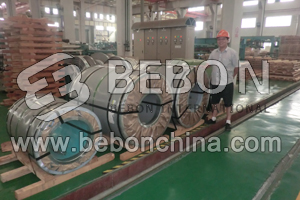Effect of Carbon on Corrosion Resistance Between SS 316 and SS 316L
Do you know the difference between SS 316 and SS 316L? Below is the answer.

As American AISI basic grades, the only practical difference between SS 316 and SS 316L is carbon content. The carbon ranges are 0.08% maximum for 316 and 0.030% maximum for the 316L type.
The European grades for the 316 and 316L types, 1.4401 and 1.4404, match on all elements with carbon ranges of 0.07% maximum for 1.4401 and 0.030% maximum for 1.4404.
The lower carbon 'variants' (316L) were established as alternatives to the 'standards' (316) carbon range grade to overcome the risk of intercystalline corrosion (weld decay), which was identified as a problem in the early days of the application of these stainless steel tube. This can result if the steel is held in a temperature range 450 to 850 for periods of several minutes, depending on the temperature and subsequently exposed to aggressive corrosive environments. Corrosion then takes place next to grain boundaries.
If the carbon level is below 0.030% then this intercrystalline corrosion does not take place following exposure to these temperatures, especially for the sort of time normally experienced in the heat affected zone of welds in 'thick' sections of steel.
There is a view that the low carbon types are easier to weld than the standard carbon types.
There does not seem to be a clear reason for this and the differences are probably associated with the lower strength of the low carbon type. The low carbon type may be easier to shape and form, which in turn may also affect the levels of residual stress left the steel after is forming and fitting up for welding. This may result in the 'standard' carbon types needing more force to hold them in position once fitted-up for welding, with more of a tendency to spring-back if not properly held in place.
The welding consumables for both types are based on a low carbon composition, to avoid intercrystalline corrosion risk in the solidified weld nugget or from the diffusion of carbon into the parent (surrounding) metal.
Welcome to contact us if you have any question.
